|
Information about "Zeppelins" |
||||||||||||||||||||||||||||||||||||||||||||||||||||||||||||||||||||||||||||||||||||||||
|
|
||||||||||||||||||||||||||||||||||||||||||||||||||||||||||||||||||||||||||||||||||||||||
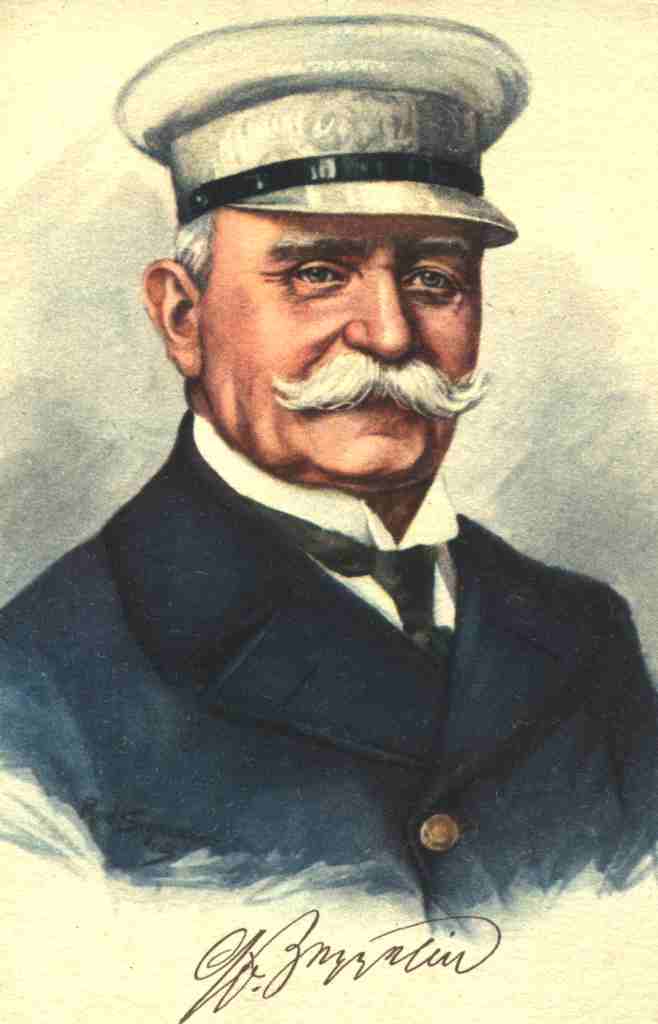
The airships of Count Zeppelin are still (today) world-famous - although "real" Zeppelins are no longer existing since about 60 years. The fascination "Zeppelin" can be noticed one more time, more and more since the last few years... But at the very beginning it was not easy at all and also people have been really sceptical against the aviation... The dream of flying was as old as the mankind itself. To cross the sky like the birds was a great aim for humanity and by the time it had become achievable. Again and again there have been ideas of designing an aircraft - some have been realistic, others totally absurd! Ferdinand Graf von Zeppelin was interested in this problematic, too, and had an idea of building a rigid airship. In cooporation with the engineer Theodor Kober the first Zeppelin-Airship, which has been started to build in April 1899, had been created.
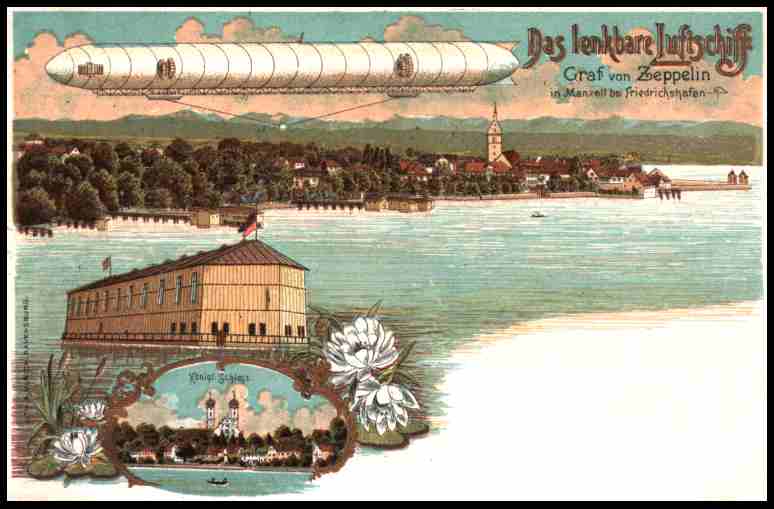
On
July 2nd, 1900 the critical moment of truth had come...
Would the critics
be right or would Caount Zeppelin persuade all the other people
with his airship? About
8.00 pm the great moment had come...The airship, which was fixed
on a float, had been towed out
of the swimming hangar on Lake Constace and started its first
ride. A world-sensation! After 18
minutes in the air Count Zeppelin landed the airship, in cause
of some technical problems
with the engines and the elevator. However,
this flight of a Zeppelin was a great success! The people, who
called Count Zeppelin only the "crazy
count" had been really fascinated by the Zeppelin-Airship, too.
The
real breakthrough of the Zeppelin-Airships started after the first
great "Zeppelin-Disaster". On August
4th + 5th, 1908 the airship "LZ 4" attempted a 24 h
- ride to show its airworthyness. In cause of some technical
problems the airship made an emergency landing - one more time,
this time near Echterdingen. The
airship got fixed to the ground and Ferdinand von Zeppelin went
to a public house into town.
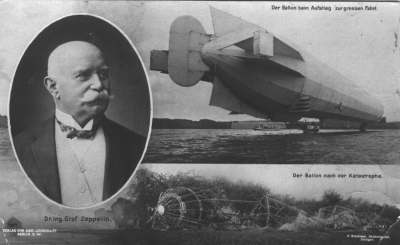
When
the Zeppelins gained more and more popularity and became
more efficient, the military started thinking
of an use for military jobs. Many airships were ordered by the
Army and Navy. When WW 1 started,
the Delag-Zeppelins turned from civil into military. The "mainjob"
for the airships should have been
bombarding - especially of England - and using the Zeppelins
for scouting. At the beginning of the
war it seemd to work out, because the airplanes were not able
to fly as high as the Zeppelins in cause
of the low efficiency of their engines. Especially during WW 1
the technical improvement of airplanes
and airships was really hugh. So, the more time the war was in
progress the more the airships become
more and more vulnerable, because the planes at some point were
able to fly as high as the airships, so they were able to shoot
down the Zeppelins very easiely. Especially
in the years of war the improvement for airships was very high.
Engines became more and more
efficient, the streamlines were used for building new airships,
and much more...
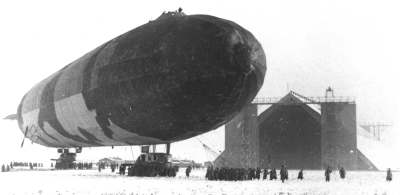
Very important experiences had been made with the airship "L 59" (a naval airship). This airship should have brought reinforcements to the German East Africa. "L 59" started from Jambol (Bulgaria), but returned in cause of a fictitious radio message by Great Britain at about the half of the complete distance and didn't fulfill its mission. The complete route the airship covered - about 6,750 km ! - was an absolute distance record for a Zeppelin at this time. Now the time had come to think of crossing the Atlantic - it was possible to cover as long distances as you have to for a transatlantic flight. But it should have taken some more time to cross the atlantic ocean - realising this plans... After WW I two smaller airships have been build by the LZ G.m.b.H., because the Treaty of Versaill gave Germany restrictions for the size of airships. These airships were have used for a German domestic airline. After the first test flight of the second Zeppelin - LZ 121 "Nordstern"- both had been requisitioned by the allies - LZ 120 "Bodensee" had been delivered to Italy, LZ 121 "Nordstern" to France. So,
once again the LZ was going to see some hard times....
Dr. Hugo Eckener,
who continued the work of Count Zeppelin after his death in 1917,
was going to do nearly everything to save the LZ from beeing
destroyed. He had many coversations with the American Gouverment
for an order
of a Zeppelin for the USA. This airship should have been used
as a part of the reparation payment. The
German Gouverment was not so happy about this arrangement, because
one stipulation was, that the Zeppelin
counts only as a part of the reparations payment when ship has
been landed save in USA - otherwise Germany
had to pay twice - for airship and the reparations. But everything
went right and the Luftschiffbau Zeppelin
G.m.b.H. had been saved! LZ 126 was delivered to the USA in 1924,
got alterated for Helium use and had
been operated by the U.S. Navy as ZR III "Los Angeles"
. This was
the first time a Zeppelin crossed the Atlantic Ocean.
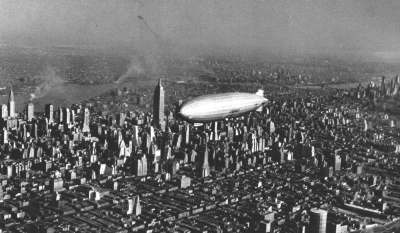
On
July 8th 1928, the 90th birthday of Ferdinand Graf von Zeppelin,
the new "big" airship - the LZ 127 was
christened as "Graf Zeppelin". It was build as a testing airship
but was so reliable that it became
world famous. Examples for some very interesting flights are the
Around-the-World-Flight in 1929 and the
Arctic-Expedition in 1931. Since August 1931 the "Graf" was used
for a scheduled airline between
Friedrichshafen and Rio de Janeiro, until it was layed up in 1937.
In 1940, it was still functionable, it
got breaked up by the order of Göring.
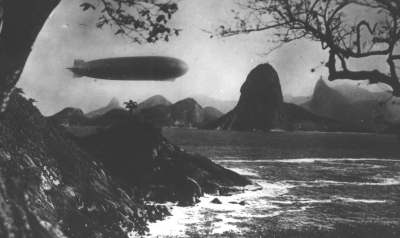
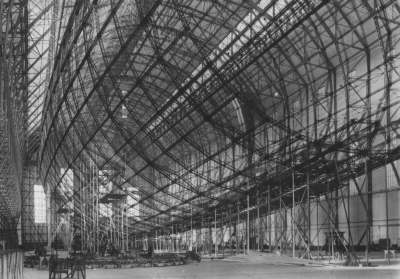
The
most gigantic aircraft ever build was the airship LZ 129 "Hindenburg".
It was 245 meters long, had maximum diameter of about 41,2
meters and was filled with 200,000 m³ hydrogen as lifting
gas. Powered by
four Mercedes Benz Diesel Engines with a total output of about
4,200 HP, the Giant Airship was driven by
propellers that accelerated the Zeppelin to a maximum speed of
approximately 130 km/h. The "Hindenburg" was the first Zeppelin
with seperate passengerdecks (not as a following section of
the control
section of the maingondola). In 1936 the LZ 129 was able to carry
55 passengers. The luxury enviroment
was the same like at the great ocean liners. On board the finest
dinners had been created, every
morning fresh bred had been baked. At this time the flight with
an airship was - especially for businessmen - the most interesting
alternative to cross the ocean. The journey with LZ 129 from
N.Y.
to Frankfurt took 2 1/2 - 3 days - with a ship 1-2 weeks! But
the flight was really expensive - about 1.200 RM! So,
the "Hindenburg" was only an airship for passengers of the "High
Society", too. But everyone -
if old or young, rich or poor - was captured by the spectacle
of the Zeppelin!
The first ride of LZ 129 was on March 4th 1936. After that - up
to the disaster on May 6th 1937 - the "Hindenburg" was used for
a scheduled airline between Germany and North-/ South-America.
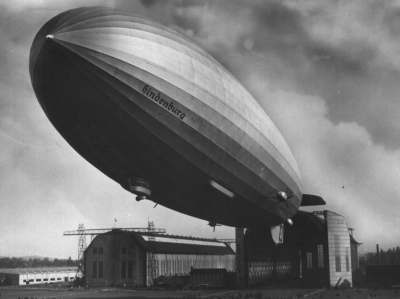
The
cause of the tragic catastrophe is still unknown. Speculations
had been made but the real cause will
be never found... Unlikely
is the theory of a sabotage-act, like in the movie "The Hindenburg".
Very interesting
is the aspect, that 62 of 97 people (61 crewmen, 36 passengers)
survived the disaster!

The
last Zeppelin-Airship of the old type was LZ 130 "Graf Zeppelin
(II)". This airship had the same
technical statistics as the "Hindenburg" (only differences in
small details). The maiden flight
was on September 14th, 1938 and did only some testflights. LZ
130 was wrecked up - together with
LZ 127 "Graf Zeppelin (I)" in March/April 1940 by the command
of Göring.
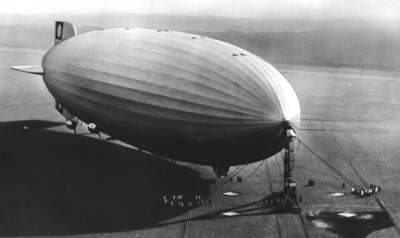
The
absolute End of the (old) Zeppelin-Airships had come when the
hangars at Frankfurt had been destroyed
on May 6th 1940 - also by command of Göring!
So, a chapter of German Aviation had been closed, an Era ended,
capturing mankind in the whole world...
|